“Shrove Tuesday”: When Was the First Mardi Gras Celebration?
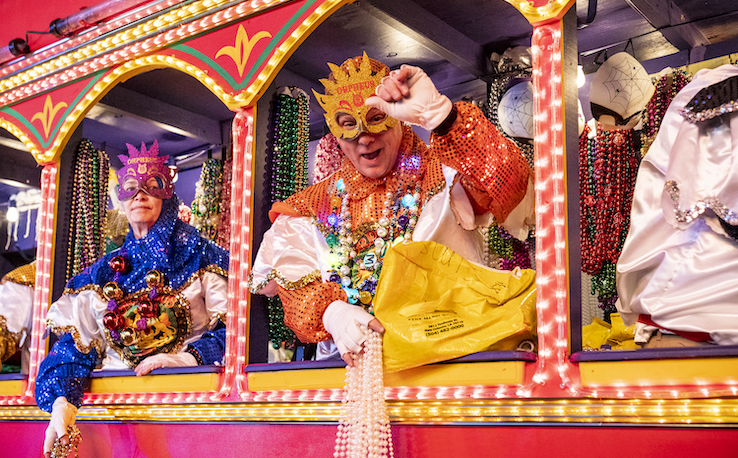
Even if the name “Shrove Tuesday” doesn’t sound familiar, the odds are that you’ve probably heard of it by one of its many other titles — like Fat Tuesday or “Mardi Gras” in French. Depending on where you are in the world, you might also hear it called Carnival Tuesday or even Pancake Tuesday.
Regardless of which name you know, this holiday is a colorfully raucous celebration commemorating some interesting religious traditions — a celebration that goes further back in history than you might think. Join us for a look into the origins of Mardi Gras and the key festivities that make the holiday a joyfully bright antidote to the winter doldrums.
The Origins of Pancake Day
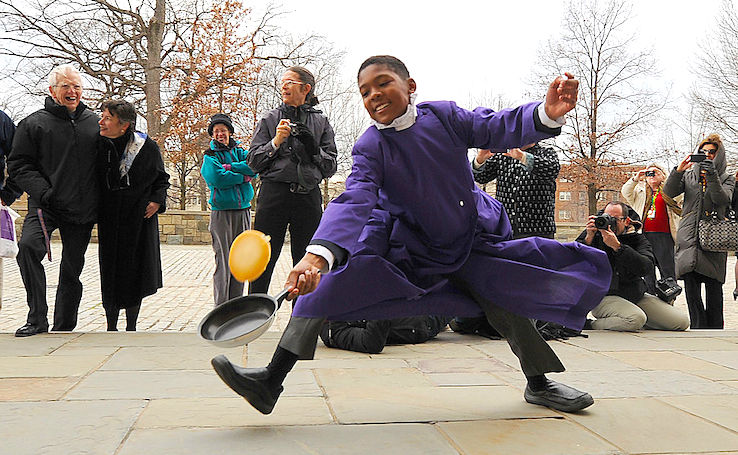
Many people who live in the U.S. tend to associate Mardi Gras with New Orleans, beads and debauchery. But the true origins of Fat Tuesday go back to at least Medieval Europe — and possibly even earlier. What we do know is that it’s no accident Shrove Tuesday is always the day before Ash Wednesday, the first day of Lent — a 40-day period of prayer and fasting that leads up to Easter Sunday. Perhaps surprisingly, Mardi Gras is a Christian religious holiday.
Fat Tuesday has its roots in 600 A.D. when Pope St. Gregory announced that Lent was taking a rather restrictive turn. He instructed everyone participating to abstain from eating meat and almost every other animal product all Lent-long. As word spread across Europe, people figured they might as well use up all their milk, eggs and butter before Lent began. Throughout England, people used them to make pancakes, which is why Shrove Tuesday is still sometimes called Pancake Tuesday.
Over in France, people used dairy products to make all kinds of tasty pastries, including king cake, which is still a Mardi Gras staple to this day. Considering that the French tend to know their way around a good pastry, it’s no surprise that the day ended up becoming known as Mardi Gras, or Fat Tuesday.
Mardi Gras’ Possible Roman Roots
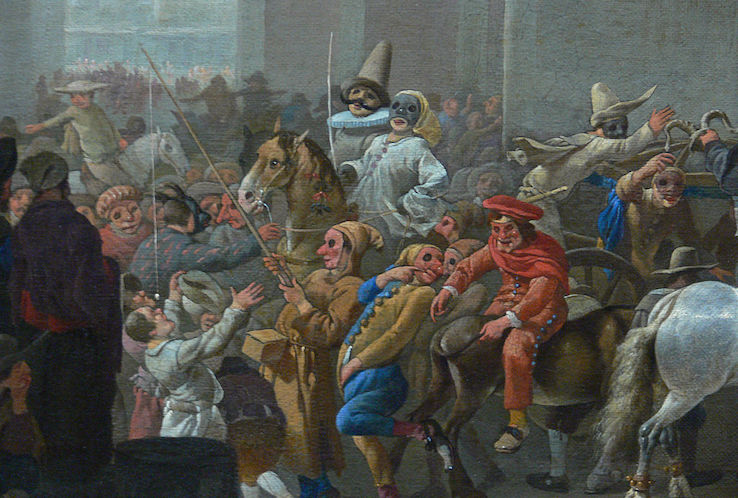
Some historians believe it’s no coincidence that there are so many similarities between the Mardi Gras festivals of today and the ancient Roman festival of Saturnalia. As Christianity spread across the globe, it wasn’t uncommon for converts to the religion to incorporate existing pagan traditions into their new customs as a way to make the transition more familiar.
Could that have been the case with Saturnalia? Let’s take a look at what the ancient festival entailed. Saturnalia was dedicated to, yes, Saturn, the God of the Harvest, and was celebrated each year around the end of December. But given that the Mardi Gras season technically begins on January 6 and ends on Fat Tuesday, the timeline isn’t too far off.
During Saturnalia, society was more or less flipped on its head, as enslaved people were often seated at the heads of the tables and served by their enslavers. Work completely came to a halt and was replaced by feasting, drinking, gambling, singing and all-around merriment. It’s likely that these ancient customs first began to overlap into a period of time between Christmas and Lent that was initially known as Carnaval, or the Feast of Fools.
First celebrated in France, the Feast of Fools was a day when revelers dressed in costumes, rules were thrown out the window and general merrymaking took over. The whole thing was presided over by a King or Bishop of Fools, who was always someone completely unequipped for the task, like a child. So, Mardi Gras’ traditions of music, costumes and general uproariousness are definitely nothing new when viewed through the lens of history.
Mardi Gras Comes to the United States
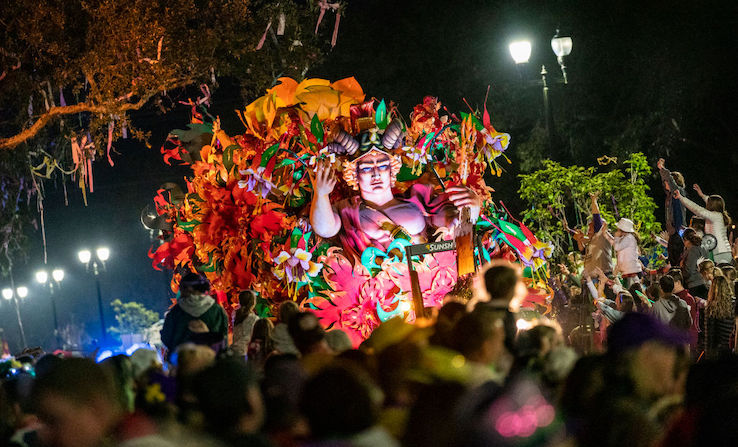
So how did the wild traditions of Fat Tuesday migrate to the shores of the United States? The answers lie with an explorer named Jean Baptiste Le Moyne Sieur de Bienville, who arrived in what we now know as Mobile, Alabama, in 1699. Ironically, it would be Mobile, rather than New Orleans, which would claim the honor of hosting the first Mardi Gras celebration in the U.S. in 1703.
New Orleans wasn’t established until 1718 but was also celebrating Mardi Gras by the 1730s. During the 1740s, Louisiana’s governor began coordinating lavish balls, which were the early descendants of the Mardi Gras balls of today.
Around the late 1830s, early Mardi Gras parades were held as masked riders and carriages stormed the streets lit with “flambeaux,” or gaslight torches. 1856 saw the founding of the Mistick Krewe of Comus, the oldest continuously operating New Orleans krewe. In case you’re unfamiliar, a krewe is a group or organization that makes Mardi Gras a bit more magical by doing something like putting on a ball or providing a parade float.
One krewe in particular, called The Rex Organization, began the tradition of selecting a Carnival King in 1872. The same year, they selected purple, green and gold as the official colors of the carnival to honor the visiting Russian Grand Duke Alexei Romanoff. Purple stands for justice, gold stands for power and green represents faith. These were the Grand Duke’s family colors and have stuck as the official colors of the celebration ever since.
Mardi Gras Around the World
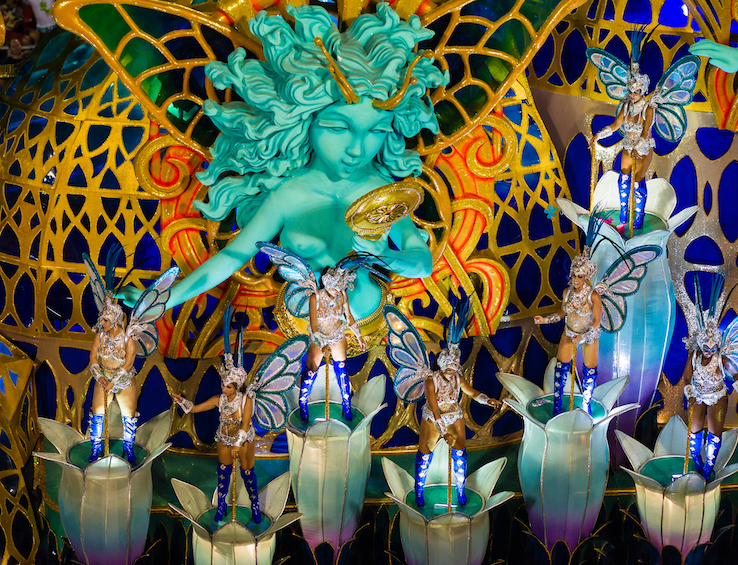
Aside from parades, Mardi Gras is brimming with other interesting traditions and symbols. Masks have become an important element of Mardi Gras celebrations, and New Orleans has gone as far as making it illegal to ride a float during the celebration without a mask or make-up on. Why? Because the heart of Mardi Gras tradition lies in being able to mingle with anyone without having to worry about class or social restrictions.
In fact, similar masks are seen at Mardi Gras celebrations worldwide. One common misconception is that Mardi Gras is an American holiday, but the truth is that the lead-up to Shrove Tuesday is celebrated in plenty of different countries.
Each year in Italy, the Carnival of Venice lasts a full two weeks before Shrove Tuesday, a tradition believed to date back to at least the 12th century. Revelers attend lavish balls and wear elaborate masks similar to those seen on the streets of New Orleans. Brazil’s annual five-day Carnaval event draws over 2 million people to the streets of Rio de Janeiro in what’s considered to be the world’s largest Mardi Gras celebration. With a tradition dating back to 1723, the streets erupt into a huge party of samba parades and other forms of merriment.
While it may be delightfully unruly, Shrove Tuesday today seems to accomplish the same goal around the world: to unite people for a bit of fun, regardless of their background or social standing.





